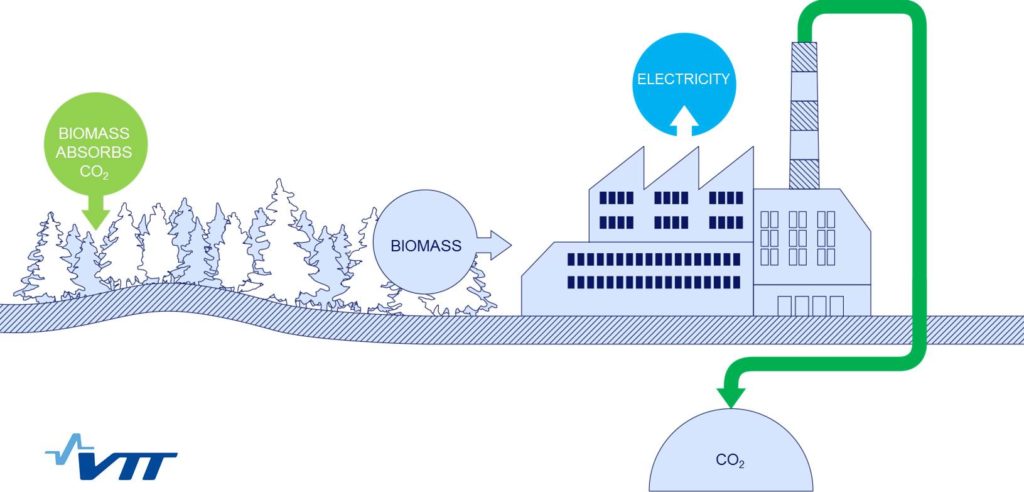This website uses cookies so that we can provide you with the best user experience possible. Cookie information is stored in your browser and performs functions such as recognising you when you return to our website and helping our team to understand which sections of the website you find most interesting and useful.
IEA Task 41 Project 5 on Bio-CC(U)S is focusing on understanding of future market change driven deployment of Bio-CCS and Bio-CCU technologies.
Climate perspective
- Bio-CCS is the only currently known large scale carbon negative solution with highlighted importance in global climate change mitigation efforts
Energy market perspective
- Partial detachment of income of power production from electricity is a market asset in fluctuating electricity markets
Raw material perspective
- Bio-CCUS is an essential part of large scale deployment of both bioeconomy and circular economy with special contribution to cascading use of wood for instance in the chemical industry

The urgency to stabilize the global temperature rise well below 2°C is highlighted in the IPCC Fifth Assessment Report. This calls for solutions that can remove CO2 from the atmosphere. Currently, the only large-scale technology that can offset CO2 from the atmosphere is Bio-CCS, also known as BECCS (Bioenergy with CCS).
By capturing and permanently storing CO2 from processes based on biomass feedstock it is possible to remove carbon from the atmosphere and thus enable negative CO2 emissions. However, current policies for lowering greenhouse gas emissions do not recognize negative emissions, and currently no fiscal incentive exists for capturing CO2 from biomass installations.
CCU (Carbon capture and utilization) is referred to as a family of technology concepts utilizing captured CO2 as a feedstock in other processes such as material and fuel production. CO2 can also be utilized as a process medium e.g. C1 chemistry products, liquid biofuels or other products or in enhanced oil or gas recovery (EOR). These technologies can potentially provide a cost effective pathway for deployment of CCS technologies, in and at the same time contribute to climate mitigation, resource efficiency and cascading use of raw material. Bio-CCUS is an essential part of large scale deployment of both bioeconomy and circular economy with particular contribution to cascading use of woody biomass, above all in the chemical industry.
Whereas the technical implementation of Bio-CC(U)S in different industrial sectors goes hand in hand with the development of conventional CCS technology deployment the driver is the ongoing change in sustainable energy and product markets of the future. From a technological point of view, the solutions for capturing CO2 from fossil fuels are suitable also for biomass applications. The main differences relate to the size and the location of emission sources. Biomass-based installations are often decentralized and of smaller scale compared to fossil-based installations. In addition, different kind of impurities from the combustion processes may affect the capture technology, but in general no principal technical restrictions to the capture of biogenic CO2 exist. As a consequence, certain Bio-CC(U)S applications are a low-hanging fruit for near future deployment of carbon capture assuming negative emissions are accounted for.
As the potential of Bio-CC(U)S is very much bound to the availability and usage of biomass raw materials, the sustainability of the raw materials is of great importance. The current biomass flows and potentials set the initial limits for the wider deployment of Bio-CC(U)S. Optimizing the impact on the system level the efficient utilization of constrained resources is an essential issue from the society point of view. One objective is to clarify whether deployment really would offer the desired impact on the CO2 concentration in the atmosphere. As biomass can be used in many ways, the primary purpose of utilization and products containing biogenic carbon also add up to this. When biomass is utilized for products other than energy, the impacts on environment and economy differ. The opportunities with these solutions, realistic potential and the main threats related to Bio-CC(U)S need to be discussed in the light of sustainability and economic potential.
 IEA Bioenergy, also known as the Technology Collaboration Programme (TCP) for a Programme of Research, Development and Demonstration on Bioenergy, functions within a Framework created by the International Energy Agency (IEA). Views, findings and publications of IEA Bioenergy do not necessarily represent the views or policies of the IEA Secretariat or of its individual Member countries.
IEA Bioenergy, also known as the Technology Collaboration Programme (TCP) for a Programme of Research, Development and Demonstration on Bioenergy, functions within a Framework created by the International Energy Agency (IEA). Views, findings and publications of IEA Bioenergy do not necessarily represent the views or policies of the IEA Secretariat or of its individual Member countries.
